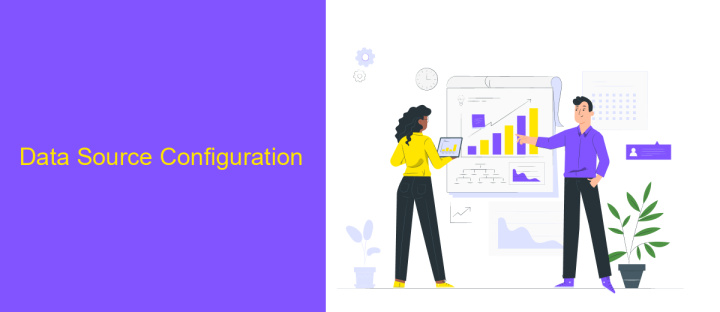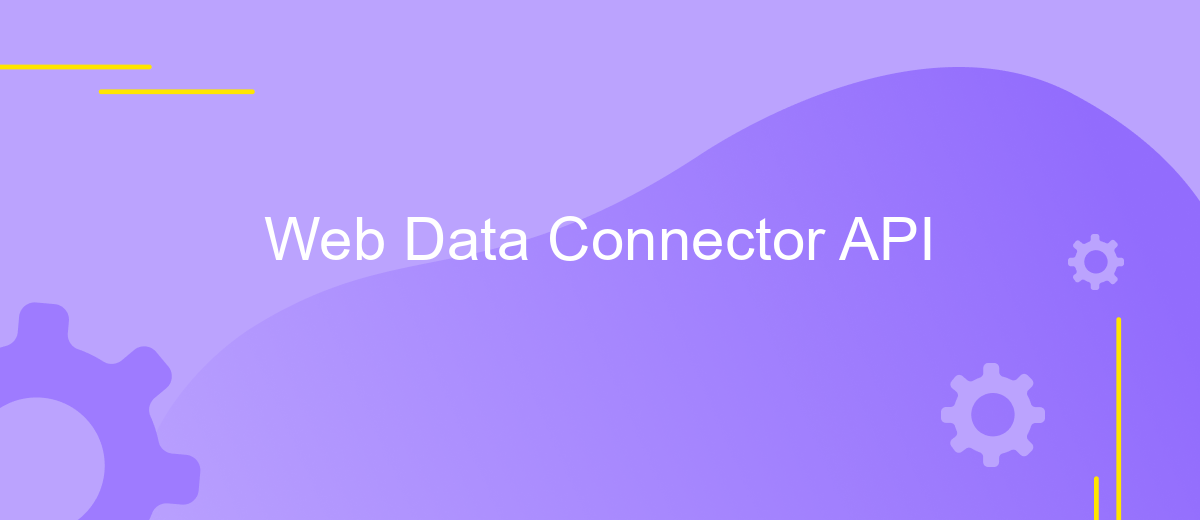Web Data Connector API
The Web Data Connector API is a powerful tool for integrating diverse data sources into web applications. It enables developers to seamlessly connect, retrieve, and manipulate data from various web-based platforms, enhancing the functionality and interactivity of web-based solutions. By leveraging this API, businesses can streamline data workflows and gain valuable insights, making it an essential component for modern web development and data-driven decision-making processes.
Introduction
The Web Data Connector API is a powerful tool designed to facilitate seamless integration between web-based data sources and data visualization platforms. By leveraging this API, developers can create custom connectors that enable users to access and analyze data from a wide array of online sources directly within their preferred data analytics software. This capability is particularly valuable in today's data-driven world, where timely insights from diverse data sets can drive strategic decision-making and competitive advantage.
- Enables integration with various web-based data sources.
- Supports custom connector development for tailored data access.
- Facilitates direct analysis within data visualization tools.
- Enhances data-driven decision-making processes.
- Promotes competitive advantage through timely insights.
By using the Web Data Connector API, organizations can significantly enhance their data analytics capabilities, breaking down silos and ensuring that critical data is easily accessible and usable. This API not only streamlines the data retrieval process but also empowers users to harness the full potential of their data, driving innovation and efficiency across various sectors. As businesses continue to evolve, the ability to quickly adapt and integrate new data sources becomes increasingly essential, making the Web Data Connector API an invaluable asset.
Data Source Configuration

Configuring your data source for the Web Data Connector API involves several essential steps to ensure seamless data integration and retrieval. First, identify the data source you intend to connect with, whether it's a database, a cloud service, or another API. Understanding the data structure and access requirements is crucial at this stage. Next, authenticate your connection by obtaining the necessary credentials, such as API keys or OAuth tokens, to ensure secure data transactions.
Once authentication is configured, define the data schema and specify parameters that will guide data extraction processes. This includes selecting specific fields, setting filters, and defining data refresh intervals. To streamline this process, consider using integration services like ApiX-Drive, which facilitate the configuration of complex data workflows without extensive coding. ApiX-Drive provides user-friendly interfaces to connect various data sources, automate data synchronization, and monitor data flow, enhancing efficiency and reliability. Finally, test your configuration to verify data accuracy and consistency, making adjustments as needed to optimize performance.
Data Retrieval

Data retrieval is a crucial aspect of utilizing the Web Data Connector (WDC) API, enabling seamless access to diverse data sources. To efficiently retrieve data, developers must first establish a connection to the desired data source, ensuring proper authentication and authorization protocols are in place. Once connected, the WDC API facilitates the extraction of data by allowing queries to be executed, ensuring that the data is both relevant and up-to-date.
- Initiate a connection to the data source using appropriate credentials and authentication methods.
- Formulate and execute queries through the WDC API to extract specific datasets.
- Parse and format the retrieved data to align with the application's requirements.
By following these steps, developers can effectively harness the power of the WDC API for data retrieval. The API's flexibility and robust querying capabilities streamline the integration of external data into applications, enhancing functionality and user experience. Proper implementation ensures that data is retrieved efficiently, minimizing latency and maximizing the relevance of the information presented to end-users.
Authentication and Authorization

When working with the Web Data Connector API, ensuring secure access to data is paramount. Authentication and authorization are crucial components that protect sensitive information and control user access. By implementing robust authentication mechanisms, you can verify the identity of users and ensure that only authorized individuals can access specific resources.
Authorization, on the other hand, determines what an authenticated user is permitted to do. It involves setting permissions and defining roles to manage access to various parts of the data. Together, authentication and authorization form a comprehensive security strategy for your web data applications.
- OAuth 2.0: A widely adopted protocol for secure authorization.
- API Keys: Simple tokens that grant access to the API.
- JWT (JSON Web Tokens): Compact tokens for secure information exchange.
- Role-Based Access Control (RBAC): Assigns permissions based on user roles.
To implement these security measures effectively, it's important to stay updated with the latest security practices and regularly review your authentication and authorization strategies. This ensures that your web data connector remains secure against potential threats, safeguarding both your data and users.


Sample Implementation
Creating a Web Data Connector (WDC) involves several essential steps to ensure seamless data integration and visualization. Initially, developers need to define the data source and structure the data in a way that the WDC can efficiently access and retrieve it. This often involves setting up an API endpoint or a data feed that the WDC can connect to. Once the data source is established, developers can utilize JavaScript to write the connector logic, which includes fetching the data, handling authentication if necessary, and transforming the data into a format compatible with the visualization tool.
For those looking to streamline the integration process, services like ApiX-Drive can be invaluable. ApiX-Drive offers a user-friendly platform that simplifies the connection between various applications and data sources without requiring extensive coding knowledge. By leveraging such platforms, developers can focus more on refining the data presentation and less on the intricacies of data fetching and API management. Ultimately, a well-implemented WDC not only enhances data accessibility but also empowers users to make informed decisions based on real-time insights.
FAQ
What is a Web Data Connector API?
How do I create a Web Data Connector?
What are the security considerations for using a Web Data Connector?
Can I automate data integration using a Web Data Connector?
What are the limitations of using a Web Data Connector?
Apix-Drive will help optimize business processes, save you from a lot of routine tasks and unnecessary costs for automation, attracting additional specialists. Try setting up a free test connection with ApiX-Drive and see for yourself. Now you have to think about where to invest the freed time and money!

